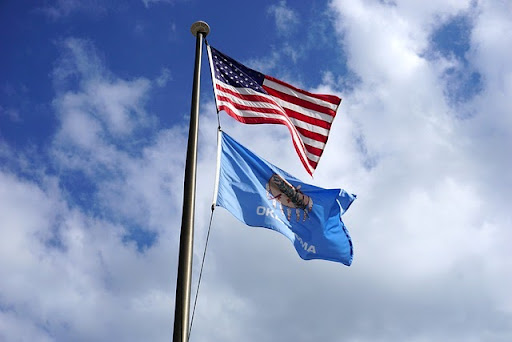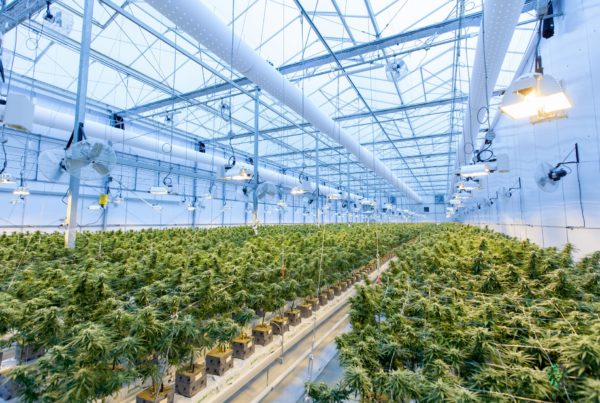On January 1, 2018, recreational cannabis became legal to cultivate, distribute, manufacture, and sell in California.
Formed to collectively govern this new industry, the Bureau of Cannabis Control (BCC), California Department of Public Health (CDPH) Manufactured Cannabis Safety Branch (MCSB), and California Department of Food and Agriculture (CDFA) Cal Cannabis released three individual sets of regulations on January 16, 2019.
On July 12, 2021, these three agencies converged into what is now known as the Department of Cannabis Control (DCC) and released a new, consolidated set of Emergency Regulations, effective September 29, 2021.
Where does cannabis waste fall into these new Emergency Regulations, and how has the requirement for its proper handling and disposal changed?
Per the Title 14 CCR, Division 19 (DCC), §17223 “Waste Management,” a batch of cannabis or cannabis products that is being disposed of because the batch has failed internal quality testing, quality assurance review by a distributor, or regulatory compliance testing shall comply with the following requirements:
- All cannabis or cannabis products in the batch shall be rendered unusable prior to disposal;
- Rendering of the cannabis or cannabis products shall be done under video surveillance;
- The reason for disposal and the disposition of the batch shall be noted in the track and trace system.
The following Frequently Asked Questions (FAQs) are to help cannabis operators better understand the updated cannabis waste requirements per the new Emergency Regulations.
-
What does Cannabis Product mean?
Under the DCC, Cannabis Product is defined as cannabis that has undergone a process whereby the plant material has been transformed into a concentrate, including, but not limited to, concentrated cannabis, or an edible or topical product containing cannabis or concentrated cannabis and other ingredients.
-
What does Cannabis Waste mean?
Under the DCC, Cannabis Waste is defined as any material intended for disposal that contains cannabis. Please note that Cannabis Waste is Non-Hazardous Waste ONLY. Any waste that is deemed Hazardous will not fall under these regulations.
-
Is Cannabis Waste required to be rendered onsite?
Cannabis Product generated by a cultivator, processor, manufacturer, distributor, retailer, or testing lab must be rendered unusable prior to leaving the licensed premises. Rendering must be conducted under video surveillance and recorded on METRC.
Cannabis cultivators, processors, and nurseries are NOT required to render their Cannabis Waste if their Cannabis Waste contains ONLY plant material (leaf, stalk, root ball, etc.). Plant material is considered an organic waste stream. Documentation is still required.
-
What is internal quality testing and quality assurance review?
QA/QC, or quality assurance/quality control, is a critical part of any industry that produces a product for public consumption. QA/QC is a combination of quality assurance, the process or set of processes used to measure and assure the quality of a product; and quality control the process of ensuring that products and services meet consumer expectations.
Cannabis Product that fails internal QA/QC testing may include but is not limited to: product that is damaged, defective, returned, off-specification (either by taste, appearance, odor, or texture), expired, failed, non-compliant, or retained. It may include new products from research and development as well as old products from facility shut-down, relocation, or re-branding. A QA/QC concern may arise at the point where the Cannabis Product is generated, or upon transfer to a third-party distributor.
-
Who is permitted to record video surveillance?
The DCC requires that Cannabis Product is rendered under video surveillance. The DCC does not specify where that video surveillance must originate. As long as the rendering is conducted under video surveillance and that video surveillance is able to be isolated and shared with the regulatory authority, it is permissible under the existing regulations. This means that a Cannabis Waste Service Provider may record and provide third-party video surveillance as part of their service offering.
-
Can local jurisdictions maintain their own Cannabis Waste requirements?
Yes. In fact, many local jurisdictions (cities and counties) throughout the State of California have opted to maintain stricter Cannabis Waste regulations due to concerns over public health and safety and environmental impact. Some jurisdictions require complete rendering of any and all types of waste that contain cannabis and/or its chemical constituents. Some jurisdictions have even begun advising on appropriate classification of Cannabis Waste as Hazardous versus Non-Hazardous.
-
Is Cannabis Waste hazardous?
Cannabis Waste is considered regulated waste — waste that is regulated by the State of California. Cannabis Waste is inherently Non-Hazardous Waste because, as it is defined, Cannabis Waste includes any material intended for disposal that contains cannabis that is NOT otherwise considered a Hazardous Waste.
If you determine that your Cannabis Waste contains one or more of the four characteristic properties (ignitable, corrosive, reactive, or toxic), it would then be considered a Hazardous Waste and NOT a Cannabis Waste. Therefore, Cannabis Waste requirements would not apply. Alternatively, Environmental Protection Agency (EPA) and Department of Toxic Substance Control (DTSC) requirements WOULD apply. Some examples of Hazardous Waste from commercial cannabis operations that ALSO contain cannabis and/or its chemical constituents include:
- Post-Manufactured Biomass – Cannabis plant material (flower, leaf, stalk, trim, shake, etc.) that has gone through the extraction process and contains residual solvent (alcohol, hydrocarbon, etc.), making it flammable and/or toxic.
- Post-Refinement Byproduct – Cannabis-containing sludge (fat, wax, lipid, terpene, raffinate, oil, etc.) that is generated as a byproduct of cannabis oil winterization, distillation, refinement, or other post-processing and that contains residual solvent (alcohol, hydrocarbon, etc.), making it flammable and/or toxic.
- Used Laboratory Specimens – Cannabis product samples that have undergone compliance testing and contain various chemicals used in the analytical process (i.e., alcohols, solvents, acids, bases, corrosives, etc.), making them flammable, corrosive, and/or toxic.
- Vaporizer Devices – Single-use and/or disposable vaporizer devices (vape pens) with non-removable internal cannabis-oil-containing cartridge and lithium-ion battery. These devices are considered Universal Waste, a form of Hazardous Waste.
What exactly has changed with the release of the new, consolidated Emergency Regulations on September 29, 2021?
-
The first notable change is the definition of Cannabis Waste.
The BCC (now referred to as the DCC) previously defined Cannabis Waste as waste that contains cannabis and that has been made unusable and unrecognizable. Cannabis Waste, under the new DCC Regulations, is now defined as any material intended for disposal that contains cannabis.
This change in definition is as much a change in timing as it is a change in meaning. Under this new definition, Cannabis Product, in its original form intended for disposal, is considered Cannabis Waste. Therefore, once the Cannabis Product is designated as waste, it would no longer be regulated as Cannabis Product, but instead Cannabis Waste. Specific handling, storage, documentation, and treatment prior to disposal are required. And again, please note that Cannabis Waste that is deemed hazardous is no longer considered Cannabis Waste, but rather Hazardous Waste, regulated by the EPA/DTSC.
How can GAIACA help?
GAIACA is California’s first properly licensed cannabis waste management company. With GAIACA’s experience and suite of services, GAIACA can assist all operators in the compliant and sustainable management of Cannabis Waste by providing the collection, destruction, disposal, surveillance, and tracking of all Cannabis Waste.
-
The second notable change is the exclusion of plant material from manufacturing.
The CDPH previously included post-manufactured biomass (cannabis plant material that has gone through extraction) as a waste stream requiring rendering prior to disposal. Under the new DCC Emergency Regulations, post-manufactured biomass is now considered an organic waste stream and can either be composed or disposed of at a solid waste landfill in its original form. Rendering, destruction, documentation, and recordkeeping MAY still required.
How can GAIACA help?
GAIACA is properly licensed and a permitted private waste hauler that can service post-extracted biomass from manufacturing facilities. DCC Emergency Regulations require cannabis waste to be taken to a fully permitted compost facility or transfer facility. GAIACA operates both a compost facility and transfer facility and will provide all documentation and recordkeeping as required by the DCC.
-
The third notable change is the inclusion of Cannabis Product from cultivation and processing
The CDFA previously deemed all cultivation-related waste material as organic waste, not requiring rendering prior to disposal. Under the new DCC Emergency Regulations, ANY Cannabis Product — whether it is at a cultivation, processing, manufacturing, distribution, retail, or testing lab facility — that fails internal quality testing, quality assurance review by a distributor, or regulatory compliance testing must be rendered unusable prior to disposal.
How can GAIACA help?
GAIACA has developed and patented the industry’s first mobile Automated Rendering Vehicle (ARV) to assist with on-site destruction of Cannabis Products. Per DCC Emergency Regulations, only cannabis licensees can conduct destruction of Cannabis Products. GAIACA is the only cannabis waste management company to hold a license with the DCC. As a cannabis license holder, GAIACA is the only cannabis waste management company that can destroy Cannabis Products in compliance with DCC rules and regulations.
IN SUMMARY:
The new Emergency Regulations have changed much of the verbiage associated with waste management practices; however, the fundamental requirements are still in place – waste labelling, secured storage, onsite rendering, video surveillance, documentation and recordkeeping.
As noted above, there are a variety of streams of waste that any one operator type may generate, and not all of these streams of waste are governed the same. As an operator, it is important that you create and implement a comprehensive Waste Management Plan that identifies your waste streams and establishes a set of standard operating procedures to ensure that they are handled properly beyond the point of generation.
Improper waste disposal carries hefty fines in California. As cannabis regulations develop and mature, so do the expectations of cannabis license-holders. We are no longer operating in the wild west but rather a fully legitimized cannabis industry. Let GAIACA handle your waste compliance so that you can continue focusing on what you do best!






